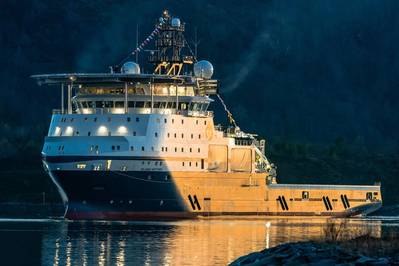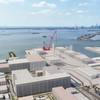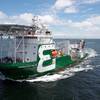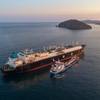Will 2024 be the Year of AHTS Recovery?
As 2023 is drawing to a close we would once again invite the readers of Offshore Engineer Magazine to gaze into our crystal ball to see what 2024 might have in store for the offshore support vessel industry. Before diving straight into our forward-looking sentiments however, it is important to address some of the main trends in the year that past as these lay the foundation for the year to come.
Continuing the market development from the year before, 2023 very much advanced the ongoing recovery for offshore support vessels further. When analyzing key metrics in our industry such as reported dayrates, average vessel utilization, and vessel valuations, this becomes abundantly clear as we find significant improvement in close to all regions and vessel segments.
That having been said however, the market has not recovered to the same degree everywhere, and different vessel segments have certainly seen their respective parameters develop in different strokes. Prime examples of this are the platform supply- and subsea construction markets, which saw tremendous improvements throughout the year. The developments seen in the anchor handling- and tug supply vessel market, however, were far more muted, especially when compared to the two former.
For PSVs specifically, we have recorded an almost 30% increase in dayrates so far this year, which comes on top of the 55% increase throughout 2022. Furthermore, 2023 has also seen the total number of large units on contract reach new all-time highs, so it is difficult to understate the market recovery herein.
In the subsea construction segments, we have seen both dayrates and contract durations increase. Not only are dayrates for several asset classes back to 2014-levels, 2023 have also brough back multi-year firm contracts for the first time in many years.
As mentioned, while improved, the AHTS segment did not muster the same kind of positive development seen elsewhere. In comparison to the above mentioned dayrate developments, average dayrates for AHTS have only seen around a 10% increase so far this year.
However, and especially in light of historical references, we see relatively weak market development as a potential identifier for opportunities rather than dismay. The AHTS vessel segment, which has lagged the above-mentioned two asset classes considerably, could, perhaps just as easily, be said to have the largest outstanding potential in its yet to be realized market recovery.
Furthermore, the foundation for a stronger market, a significant improvement to the “floor” for these assets, can certainly be said to have materialized. In the North Sea spot market for example, we note some very interesting statistics to this effect.
On the Norwegian Continental Shelf, 2023 year-to-date we have recorded just shy of 200 fixtures with the lowest level fixed at NOK 175,000 per day, whereas 2022 running to 26th November had 209 fixtures reported – but around 50 of these were fixed at lower than NOK 175,000 per day, with the lowest recorded fixture at just NOK 75,000 per day!
The spot market for AHTS working out of the UK saw an even sounder development with 285 reported fixtures so far this year which compares to around 230 at the same time last year. The lowest recorded dayrates in this time period went from just GBP 8,000 last year to GBP 14,500 per day so far this year. Moreover, 2023 thus far has seen the number of fixtures concluded at less than GBP 20,000 almost cut in half compared to 2022 at the same time.
So, while the North Sea spot market this year did not reach 2022’s peak dayrate levels echoing past glories for AHTS, it has, by a large margin, raised the bottom levels for these vessels.
Nonetheless there is still something borderline confusing to note - some of the latest term fixtures fetched dayrates around $40,000 per day for both supply segments. Especially so when we know how much higher the dayrates for AHTS’ were last time the market activity picked up as we have seen since the trough. And that allows us to pivot to next year – where the anchor handlers might very well catch up to other segments.
First off, the present state of the AHTS fleet is in the best position we have recorded since the start of the downturn. Not only is the number of working units globally back to 2016-levels but more importantly we now have a total fleet count last seen in 2012. Thus, as the demand for these units continues to improve the market balance will only tighten even further.
But those are overall figures, and the picture becomes even more interesting when we factor in the age and condition of the fleet in order to determine a more practical, or rather more commercial, fleet count. In fact, more than 15% of the total fleet is still laid up despite the market improvement. And while some of these assets will undoubtedly return to the market, around half of them are at least 25 years old, and around 70% have been cold stacked for at least five years.
Taking into account that more than half of the still cold-stacked units are found in either West Africa or Southeast Asia and that almost 80% have less than 10,000 BHP, we find it highly unlikely that most of these vessels will ever sail again less that one last voyage. Furthermore, we find the fact that these units remain inactive while dayrates for almost all AHTS asset classes have more than doubled since their trough further proof of this.
On the demand side, we find highly encouraging scenarios playing out for all asset classes of AHTS. The levels of investment into benign, shallow water, and to a certain extent deepwater, regions will see the volume of small- medium-sized vessels on contract continue to increase. The main driver here obviously being the offshore field developments in the Persian Gulf, a region which is expected to see tremendous amounts of activity in the next few years.
For high-capacity AHTS the main demand-pull next year will stem from more deepwater and ultra-deepwater developments primarily with floating production systems. The most significant driver for FPS start-ups is the Latin American region, specifically Brazil therein, but other regions are also expected to see substantial activity.
In fact, 2024 might see more than 20 new FPS brought on stream alone, which would be more than double the historical average. Demand derived from operations associated with floating structures, such as towage, anchor operations, mooring, and hook-up are thus expected to further increase next year.
Another important development to note is the offshore wind sector’s burgeoning demand, particularly the floating offshore wind segment. While still in its infancy as an industry, project developments in this market space are expected to generate demand pull for primarily large AHTS and thereby contribute to a further tightening of the supply side.
In 2024 we count as many as 17 floating offshore wind projects scheduled to commence construction globally, adding 34 turbines and a combined capacity of 262 MW to the market. Just like other floating structures, these projects will require significant amounts of offshore support. Moreover, while these projects are quite marginal in size compared to the bottom fixed projects under development, due to the operational requirements, the high-end anchor handlers will be essential for large parts of the installation scope including towing, pre-lay, and hook-up activities.
Currently, the most relevant AHTS fleet for floating offshore wind, specifically vessels with more than 250t bollard pull, only count approximately 60 units out of a global fleet of around 1,600 units – or less than 4% of the total fleet. Furthermore, when accounting for other limiting factors such as vessels operating in China, Brazilian flagged or Jones Act units and exclude these from the competitive fleet – as they are unlikely to relocate from their existing markets – the pool shrinks to around 40 units.
Given the stagnant vessel supply due to the almost complete absence of newbuilds, coupled with the escalating demand from the Oil & Gas sector, a tight market supply for high-end AHTS is anticipated as a result. In this regard, it is also worth mentioning that the largest asset class is also the asset class that has seen the least movement dayrate-wise when compared to previous highs, arguing for an especially favorable upside for these units specifically.
Finally, we find it intriguing that while we have seen accelerating prices and strong volume in the secondhand sales market for PSVs, the AHTS market has been lagging here as well. Secondhand prices, and with it, asset valuations, for the former has seen a terrific boost during 2023, whereas the same trendlines for anchor handlers could again be described as less aggressive in comparison. As such, should our above listed market forecasts come to fruition, we find it more than likely that the S&P market for AHTS will greatly improve during next year – of which we are firm believers that it will!












